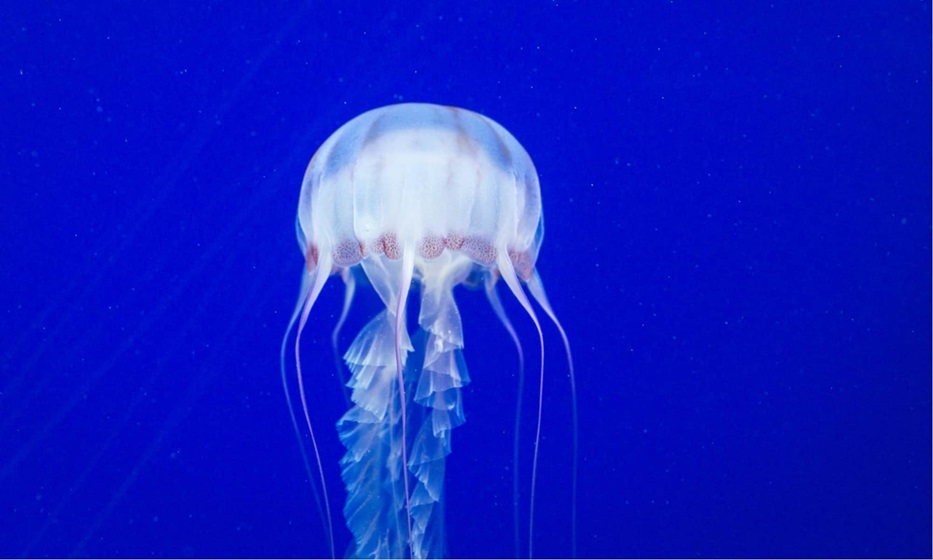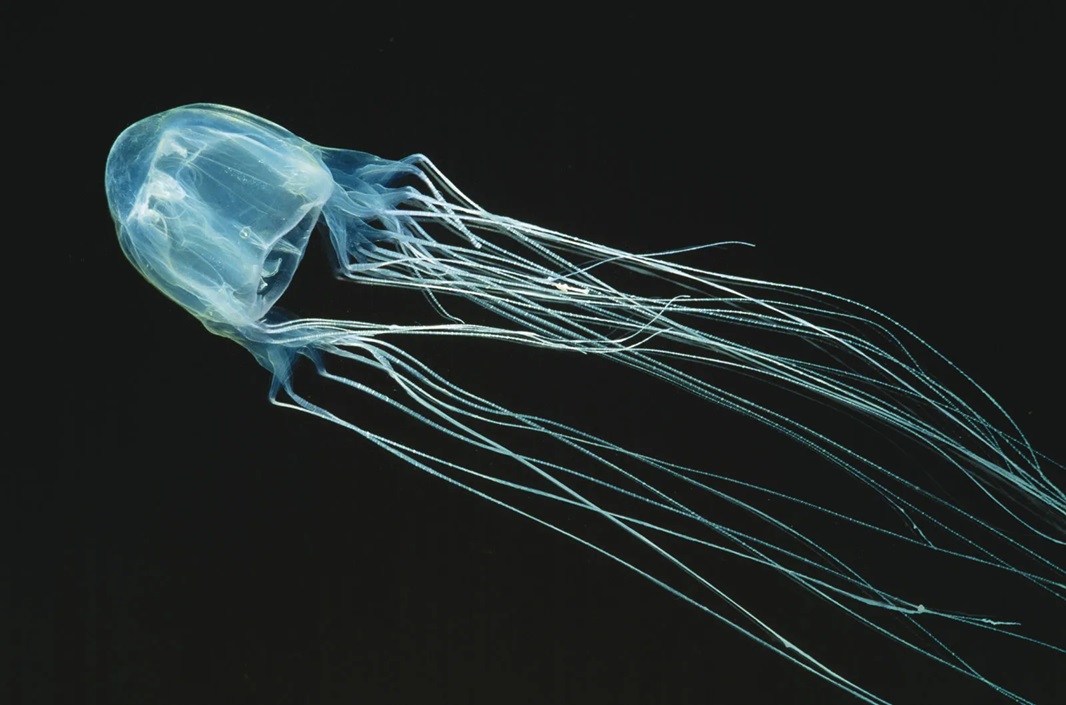The box jellyfish is one of the most dangerous and fascinating creatures in the ocean. With its almost invisible body and powerful venom, it has captured the attention of scientists, swimmers, and beachgoers around the world. In this article, we will explore everything about box jellyfish in simple, easy-to-understand language. We’ll talk about what they are, where they live, why they are dangerous, and what to do if you ever see one.
Table of Contents
What Is a Box Jellyfish?
A Transparent Sea Animal
A box jellyfish is a type of jellyfish that lives in the ocean. It gets its name from its cube-shaped body, which looks like a box. Unlike many other jellyfish that float around with the waves, box jellyfish can actually swim. They use a special kind of movement to push themselves through the water.
How It Looks
Box jellyfish are almost see-through, which makes them very hard to see in the water. This is one reason why they are so dangerous to swimmers. Their tentacles hang from the corners of their box-shaped body and can be up to 10 feet (3 meters) long.
Where Do Box Jellyfish Live?
Warm Coastal Waters
Box jellyfish are mostly found in warm ocean waters. They live near the coasts of northern Australia, the Philippines, Thailand, Malaysia, and other parts of Southeast Asia. Some species can also be found in Hawaii and other tropical areas.
When Are They Most Active?
These jellyfish are most active during the warmer months, usually between October and May. In Australia, this time is known as “stinger season.” During this season, swimmers are warned to stay out of certain waters or wear protective clothing.
Why Are Box Jellyfish Dangerous?
Their Venom Is Very Powerful
Box jellyfish are known for their venom, which is one of the most deadly in the animal world. Their tentacles have tiny stingers called nematocysts. These stingers inject venom into anything that touches them.
The venom attacks the heart, nervous system, and skin cells. In some cases, it can cause death in just a few minutes. Even when it is not deadly, the sting can be extremely painful and leave scars.
Fast-Acting Effects
Unlike other jellyfish, the box jellyfish sting acts very fast. A person who is stung may feel a sharp pain, have trouble breathing, or even pass out. In serious cases, it can cause heart failure. That’s why it’s important to get help right away if someone is stung.
Types of Box Jellyfish
Chironex Fleckeri
This is the most well-known and deadly type of box jellyfish. It is found mainly in the waters of northern Australia. Its venom is strong enough to kill a person in just a few minutes.
Irukandji Jellyfish
The Irukandji is a smaller type of box jellyfish, but it is still very dangerous. Even though it is tiny—only about the size of a fingertip—its sting can cause what is known as “Irukandji syndrome,” which includes extreme pain, vomiting, and high blood pressure.
Other Species
There are about 50 known species of box jellyfish around the world. While not all are deadly, many can still cause pain and serious reactions.
How Do Box Jellyfish Hunt?

Smart and Fast Movers
Unlike most jellyfish, box jellyfish can see where they’re going. They have 24 eyes, which help them avoid obstacles and find food. They swim around instead of just floating, which makes them more active hunters.
What They Eat
Box jellyfish eat small fish, shrimp, and other tiny sea creatures. They use their tentacles to catch and kill their prey with venom. Once the prey is caught, it is moved into the jellyfish’s body to be digested.
How to Stay Safe from Box Jellyfish
Avoid Swimming During Stinger Season
If you are in a place where box jellyfish live, try not to swim during their active months. Beaches usually have warning signs if jellyfish have been seen in the area.
Wear Protective Clothing
Special suits called “stinger suits” or “wetsuits” can protect you from jellyfish stings. These suits cover most of your body and are often worn by swimmers and divers in box jellyfish areas.
Swim in Safe Zones
Many beaches in Australia and Southeast Asia have nets in the water to keep jellyfish out. These are known as stinger nets, and it’s safer to swim in these areas.
What to Do If Stung by a Box Jellyfish
Act Quickly
If someone is stung, you should get them out of the water right away. The sting can cause someone to stop breathing or lose consciousness.
Use Vinegar
Pour vinegar on the stung area to stop more venom from being released. Do not rub the sting or use fresh water, as this can make it worse.
Call for Help
Call emergency services as soon as possible. Some places have special first aid kits on the beach for jellyfish stings.
CPR May Be Needed
If the person has stopped breathing, you may need to perform CPR. Every second counts with a box jellyfish sting.
Interesting Facts About Box Jellyfish
They Can See
Box jellyfish have 24 eyes, grouped into clusters. Some of these eyes can even detect colors and shapes. This makes them very different from other jellyfish, which are usually blind.
They Can Swim
While most jellyfish drift with the ocean currents, box jellyfish can swim quickly. They use a pulsing motion to push water behind them.
They Are Almost Invisible
Their bodies are see-through, making them hard to see in the water. This is why they are such a danger to swimmers.
Short Lifespan
Box jellyfish usually live for less than a year. But during that short time, they can cause a lot of harm.
Why Are Box Jellyfish Important?
Part of the Ecosystem
Even though they are dangerous to humans, box jellyfish are an important part of the ocean’s food chain. They help keep the populations of small sea creatures in balance.
Studied for Medical Use
Scientists are studying box jellyfish venom to learn more about how it works. This research could help create new medicines for heart problems or pain relief.
Myths About Box Jellyfish
Peeing on a Jellyfish Sting Helps
Many people believe that peeing on a jellyfish sting will help, but this is not true. In fact, it can make the sting worse. Always use vinegar and seek medical help.
All Jellyfish Are Deadly
Not all jellyfish are dangerous. Most jellyfish stings are painful but not deadly. Box jellyfish are among the few that can actually kill a person.
Conclusion
Box jellyfish may look like harmless, floating creatures, but they are among the most dangerous animals in the ocean. Their powerful venom, almost invisible body, and fast-acting sting make them a serious threat to swimmers and divers in tropical waters.
By learning about these creatures, staying alert, and following safety tips, you can enjoy the ocean safely. Always respect nature, and remember that the most beautiful creatures can sometimes be the most dangerous.










